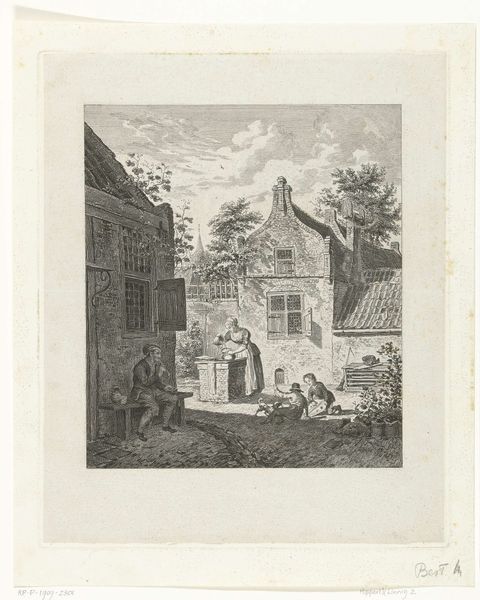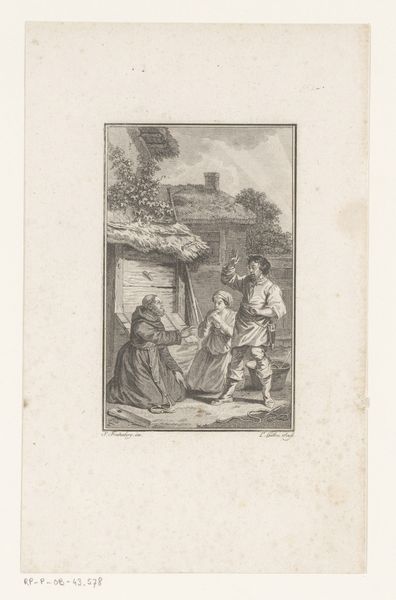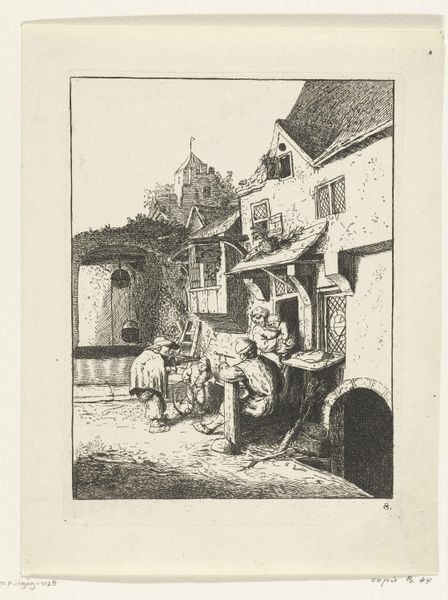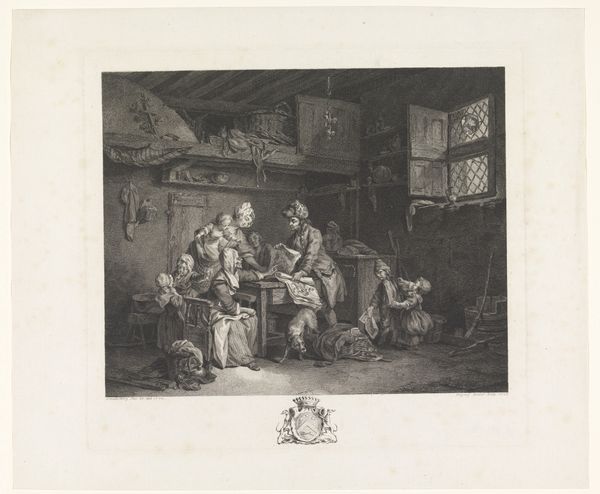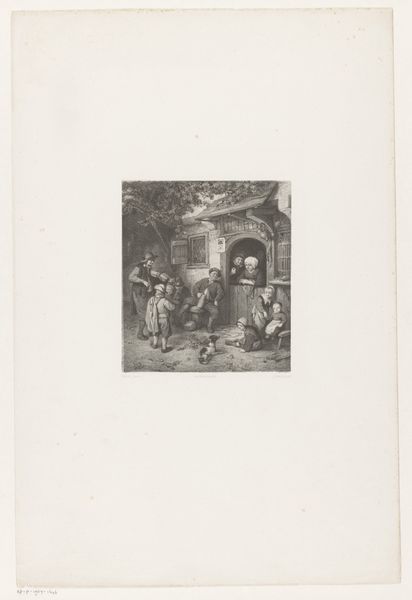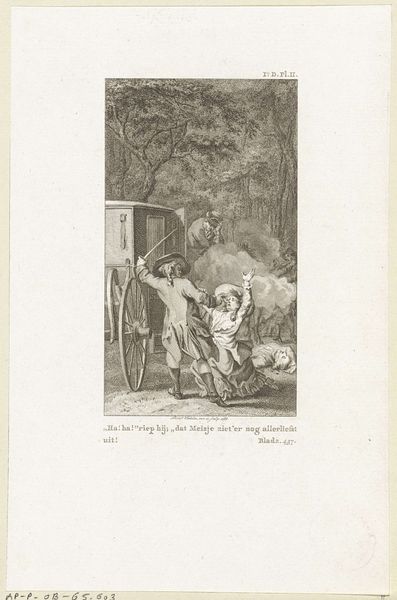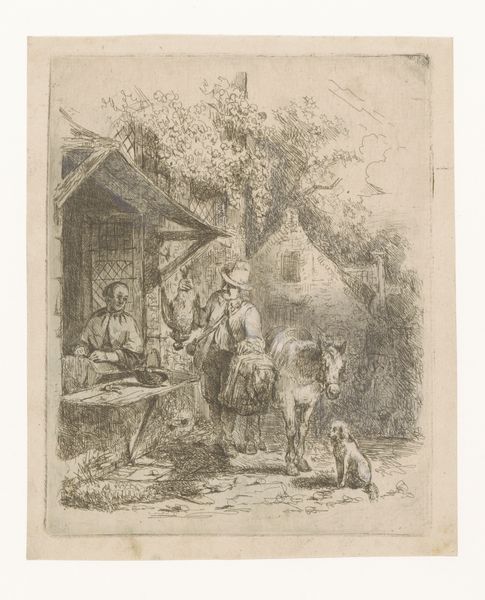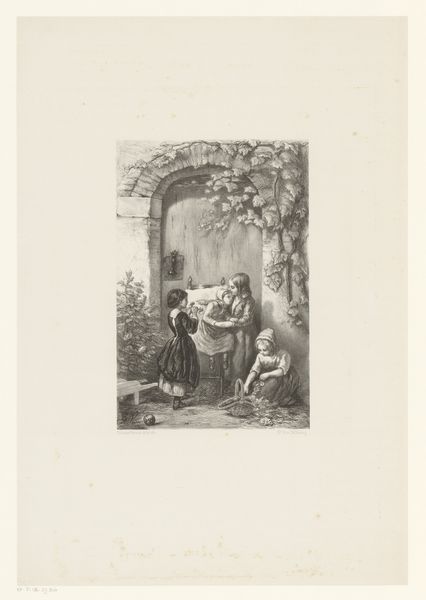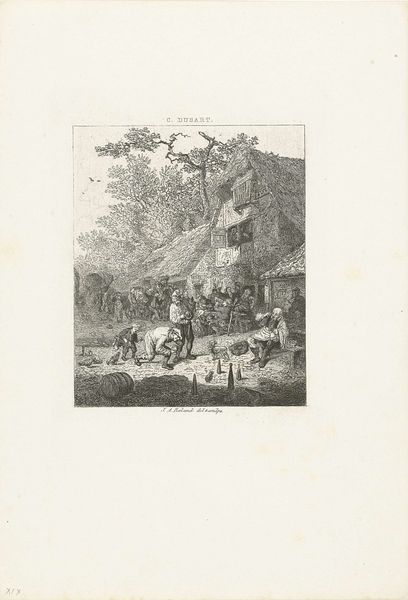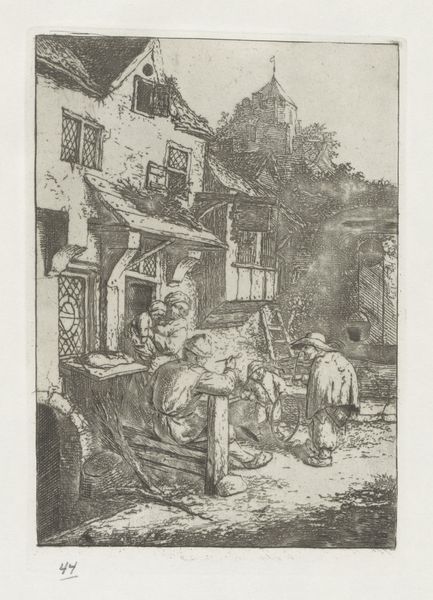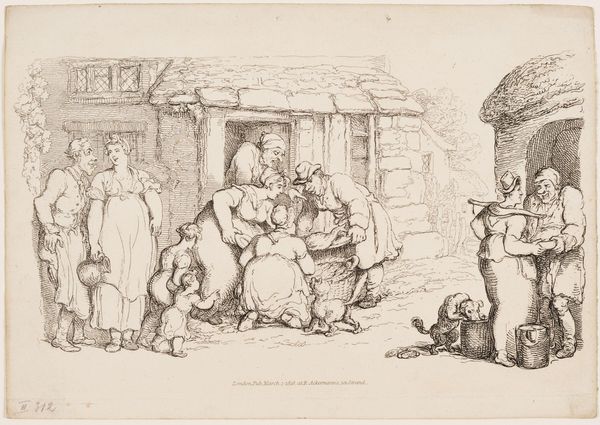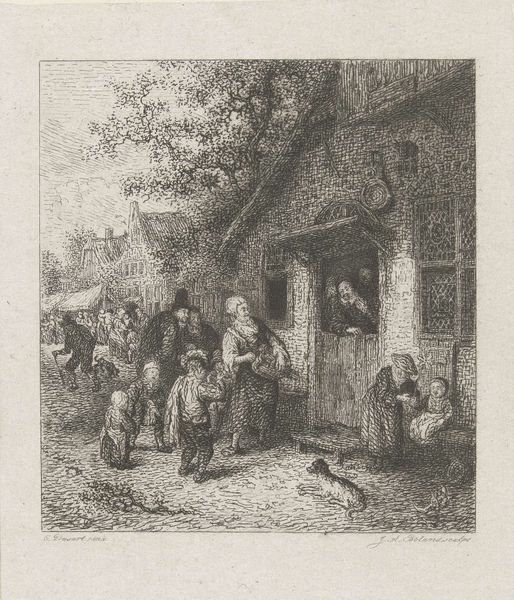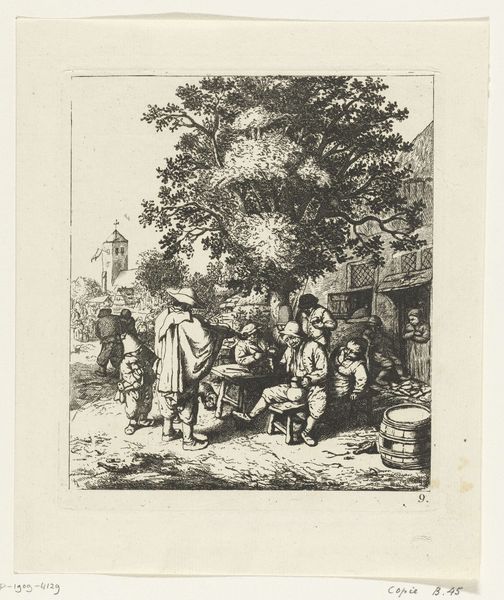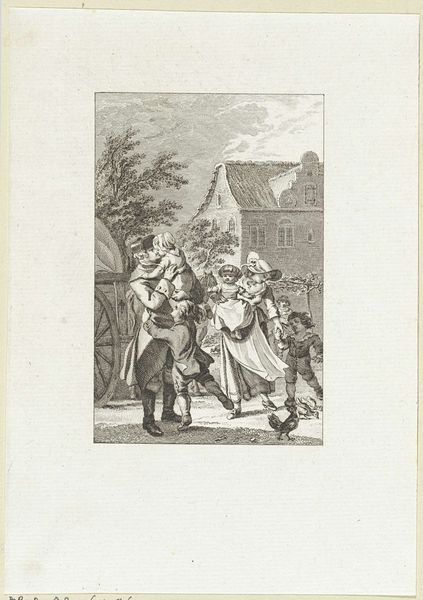
Dimensions: height 210 mm, width 149 mm
Copyright: Rijks Museum: Open Domain
Curator: This is Reinier Vinkeles's "Wooded Landscape with a Man Kneeling Before His Beloved," created in 1788. It is a print, an engraving to be precise. What strikes you most immediately? Editor: Well, the stark contrast in light and shadow definitely pulls my eye right to the figures. There's an intimacy here, but something feels performative about it too. All those trees watching... it's Romanticism alright. Curator: You pinpoint something important, that theatricality. Romanticism often explored personal emotion against the backdrop of broader social narratives. This scene isn’t just a simple profession of love; it also speaks to societal expectations around marriage, particularly regarding social standing. Note that on the left there is another man on horseback looking on the scene. Editor: Exactly! Is he a suitor rejected? A reminder that this isn't happening in a vacuum? I'm curious about the woman’s positioning, too. Is she granting him forgiveness, perhaps acknowledging his humble submission by accepting his marriage proposal? This visual narrative clearly suggests a power dynamic worth investigating. Curator: Indeed, gender roles are vital to understanding this piece. Consider that a woman's value was often tied to her family and lineage. Here the house on the background symbolizes hearth, roots, the importance of stability to maintain a well balanced life. It makes one wonder about who holds power here, what constraints she is facing when she apparently forgives the man. Editor: And there's the child between them. I think about questions of class too: what would it mean for them to build a home in those times? Vinkeles isn't simply depicting a scene; he is constructing an idea about love and its intersections with economic and social pressures. It becomes this micro-drama embodying those cultural tensions. Curator: Yes, Vinkeles’ work serves as a mirror to late 18th-century anxieties around societal structure, filtered through sentimentality. By utilizing conventional visual codes, the work prompts us to deconstruct narratives. Editor: So, beyond the pastoral beauty, Vinkeles’s piece prompts deeper reflection about those invisible threads tying personal choice to pervasive ideologies. Curator: Precisely. I find I come away considering how institutions influence the private sphere, just as they did centuries ago. Editor: A humbling and illuminating observation. Thank you.
Comments
No comments
Be the first to comment and join the conversation on the ultimate creative platform.
